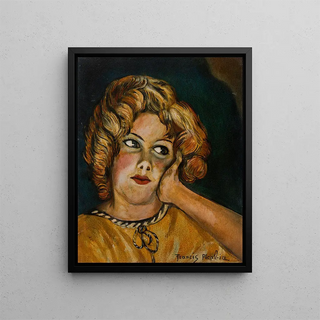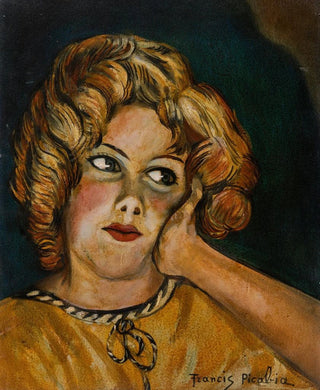Art print | Untitled - Francis Picabia


View from behind

Frame (optional)
"Untitled" by Francis Picabia is a captivating piece that embodies the avant-garde spirit of the early 20th century. This artwork, like many others created by this artist, unfolds as a true visual manifesto, where artistic conventions are not only questioned but also reinvented. Picabia, a prominent figure of the Dada movement, manages to capture the essence of his era, oscillating between playful and serious, the real and the absurd. The art print of this work invites us to dive into a universe where the boundaries between art and everyday life blur, and where each glance at the canvas reveals a multitude of meanings.
Style and uniqueness of the artwork
Picabia's style is both eclectic and deeply personal. In "Untitled," the artist plays with abstract forms and bold colors, creating a visual dialogue that engages the viewer. The flowing lines and organic motifs seem to dance across the canvas, evoking a sense of movement and dynamism. This piece perfectly illustrates Picabia's ability to fuse different styles, ranging from cubism to lyrical abstraction, while maintaining a touch of irreverence that is uniquely his. The richness of textures and the diversity of elements present on the canvas testify to an ongoing quest for innovation, making each view a unique experience. By moving away from traditional figurative representations, Picabia encourages us to redefine our relationship with art, urging us to see beyond appearances.
The artist and his influence
Francis Picabia, born in 1879 in Paris, is an artist whose influence transcends artistic movements. As an active member of Dadaism, he not only contributed to the deconstruction of established aesthetic values but also paved the way for new forms of artistic expression. His provocative approach and critical spirit towards society of his time made him a central figure of the avant-garde. Picabia was able to gather around him artists and thinkers, creating a network of ideas that nourished Surrealism and other contemporary movements.

Matte finish

View from behind

Frame (optional)
"Untitled" by Francis Picabia is a captivating piece that embodies the avant-garde spirit of the early 20th century. This artwork, like many others created by this artist, unfolds as a true visual manifesto, where artistic conventions are not only questioned but also reinvented. Picabia, a prominent figure of the Dada movement, manages to capture the essence of his era, oscillating between playful and serious, the real and the absurd. The art print of this work invites us to dive into a universe where the boundaries between art and everyday life blur, and where each glance at the canvas reveals a multitude of meanings.
Style and uniqueness of the artwork
Picabia's style is both eclectic and deeply personal. In "Untitled," the artist plays with abstract forms and bold colors, creating a visual dialogue that engages the viewer. The flowing lines and organic motifs seem to dance across the canvas, evoking a sense of movement and dynamism. This piece perfectly illustrates Picabia's ability to fuse different styles, ranging from cubism to lyrical abstraction, while maintaining a touch of irreverence that is uniquely his. The richness of textures and the diversity of elements present on the canvas testify to an ongoing quest for innovation, making each view a unique experience. By moving away from traditional figurative representations, Picabia encourages us to redefine our relationship with art, urging us to see beyond appearances.
The artist and his influence
Francis Picabia, born in 1879 in Paris, is an artist whose influence transcends artistic movements. As an active member of Dadaism, he not only contributed to the deconstruction of established aesthetic values but also paved the way for new forms of artistic expression. His provocative approach and critical spirit towards society of his time made him a central figure of the avant-garde. Picabia was able to gather around him artists and thinkers, creating a network of ideas that nourished Surrealism and other contemporary movements.






